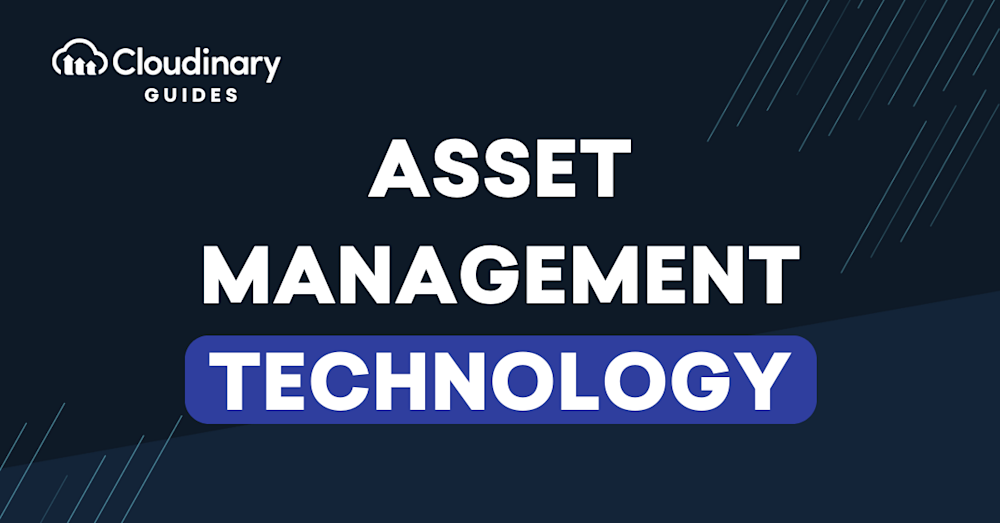Whether you’re tracking thousands of digital files or coordinating creative teams across multiple continents, asset management technology gives businesses a significant competitive edge. Modern asset management software unlocks real opportunities to scale from streamlining operations to enhancing collaboration and security.
Let’s explore five key ways asset management technology reshapes how organizations work and how it can help yours do the same.
Pro Tip Consider Cloudinary’s Digital Asset Management
Looking for a centralized location to manage all your media assets? Cloudinary’s Media Library makes it easy to upload, store, manage, and deliver images and videos efficiently.
1. Centralized Asset Control and Smart Organization
We’re past the era of scattered spreadsheets, overflowing folders, and misplaced digital files. Today’s asset management platforms provide a single source of truth for your organization’s images, videos, documents, and other assets. This centralization improves accessibility and ensures your teams continuously work with the latest, approved versions of files.
With features like AI-powered tagging, metadata filtering, and advanced search capabilities, users can quickly find exactly what they need. From marketing brochures and product photos to archived campaign videos, asset management tools provide structure and control over expanding content libraries.
2. Automation That Boosts Efficiency and Reduces Errors
Modern asset management software enables teams to move faster and smarter by automating key workflows. Features like version control, rights management, and scheduled asset expiration eliminate the manual steps that slow teams down.
Instead of juggling multiple email chains or relying on outdated assets, teams benefit from real-time updates, clear approval paths, and automated tracking of file usage. The result? Fewer errors, faster production cycles, and more time for creative and strategic work.
3. Stronger Collaboration Across Teams and Tools
With marketing, design, development, and sales often working on the same assets, efficient collaboration is critical. Asset management technology enables seamless sharing, annotation, and feedback, regardless of team members’ locations.
Integrated with tools like Adobe Creative Cloud, Canva, and project management platforms, these systems support a connected workflow from creation to publication. You can assign tasks, comment on assets, and maintain version history in one place. This eliminates bottlenecks, keeps teams aligned, and ensures that everyone’s working with the most current, approved content.
4. Insight-Driven Decisions Through Performance Analytics
Effective digital asset management requires understanding not just the assets themselves, but also their performance. Many asset management platforms now feature built-in analytics dashboards, offering insights into asset usage, engagement, and return on investment (ROI).
By tracking which content resonates with your audience and identifying underutilized assets, you can refine future campaigns and allocate resources more effectively. These data-driven decisions lead to better outcomes and a more strategic use of your asset library.
5. Scalability, Security, and Future-Proof Functionality
As businesses grow, their digital asset needs also expand. Asset management software is designed to scale, handling increased content volume, larger teams, and more complex workflows seamlessly. It also helps future-proof your organization by supporting the latest media formats and integrating with cloud-based systems.
Security is another significant advantage. With user access controls, encryption, and automated compliance features, organizations can protect sensitive content and ensure licensing requirements are met, reducing the risk of costly errors or legal issues.
How Cloudinary Leads the Way in Asset Management
Cloudinary takes asset management to the next level. As a cloud-based Digital Asset Management (DAM) platform, it offers advanced features like:
- AI-powered image and video optimization
- Smart cropping and auto-tagging
- Headless and composable architecture for full customization
- Seamless integration with CMS, eCommerce, and creative tools
Cloudinary helps teams organize and deliver assets efficiently, while also elevating the quality of those assets. From accelerating the delivery of high-quality visuals to maintaining brand consistency across all channels, Cloudinary is built to support every stage of your digital media workflow.
Final Thoughts
Asset management technology is a necessity for organizations serious about efficiency, collaboration, and growth. By investing in the right system, businesses can centralize content, reduce operational friction, and unlock new levels of productivity.
If you’re looking to streamline digital asset workflows and scale your content operations, Cloudinary offers a robust, flexible solution tailored to your needs.
Ready to elevate your digital asset management? Explore Cloudinary and discover how more innovative asset management can drive tangible results.


